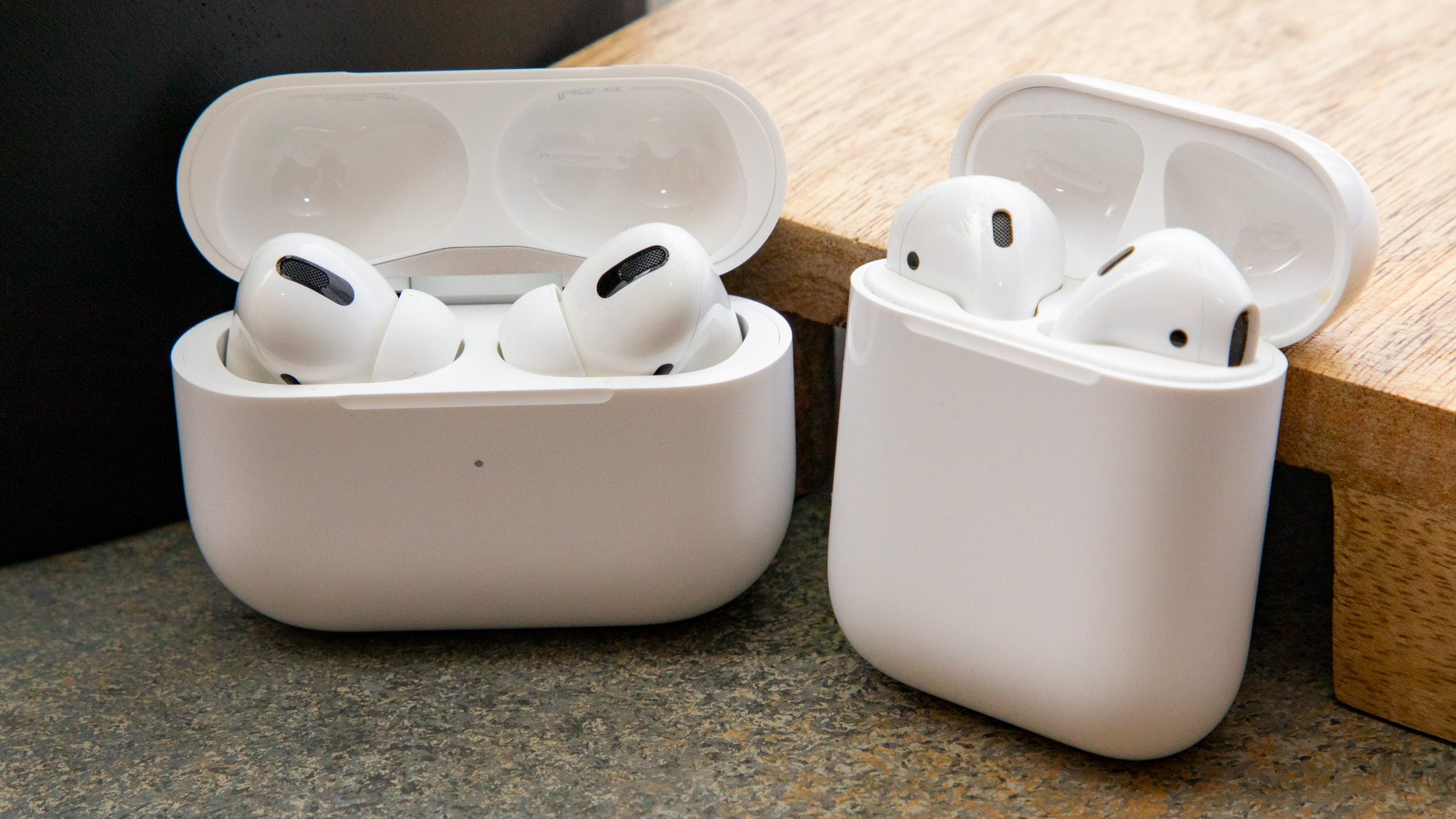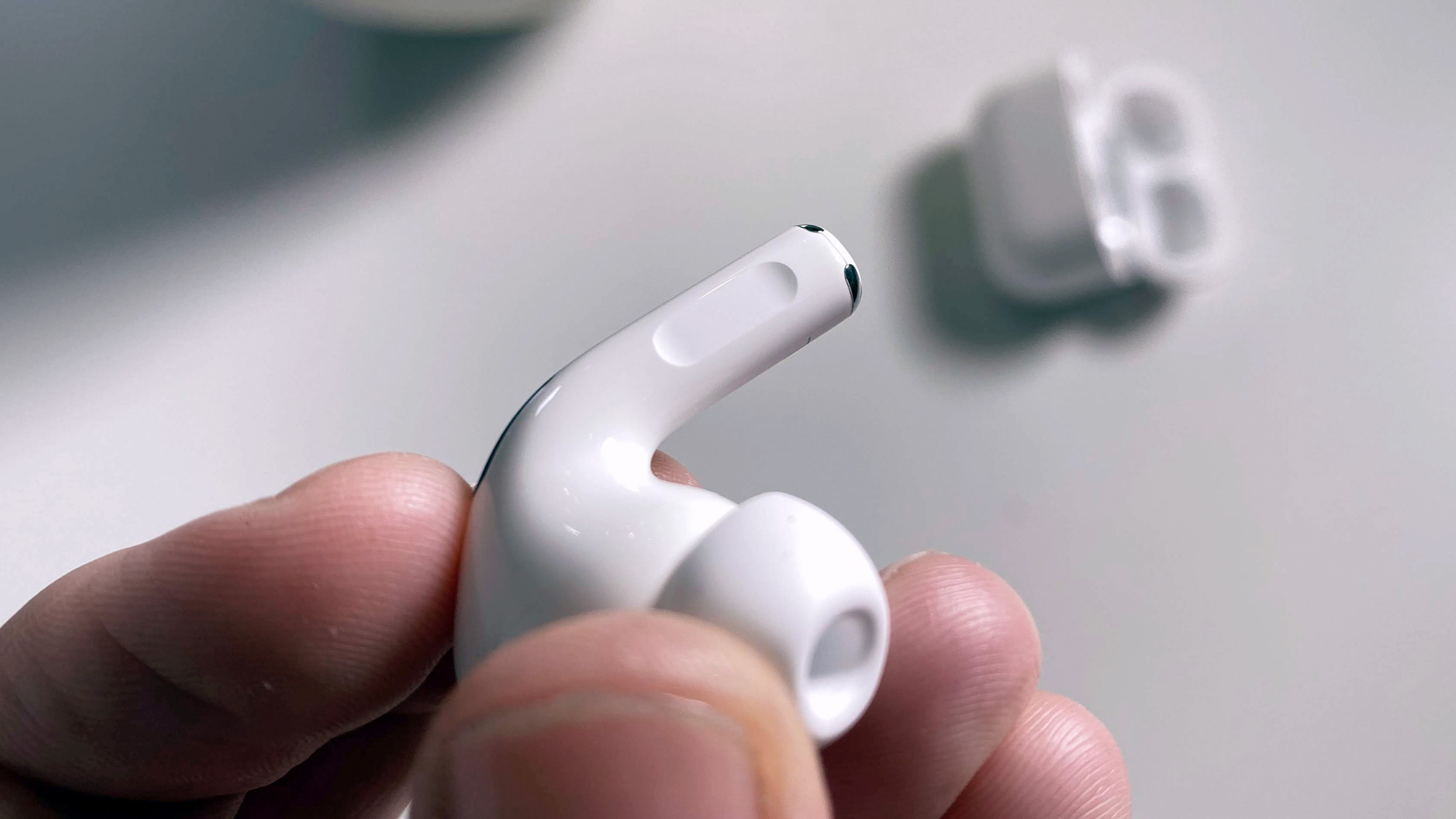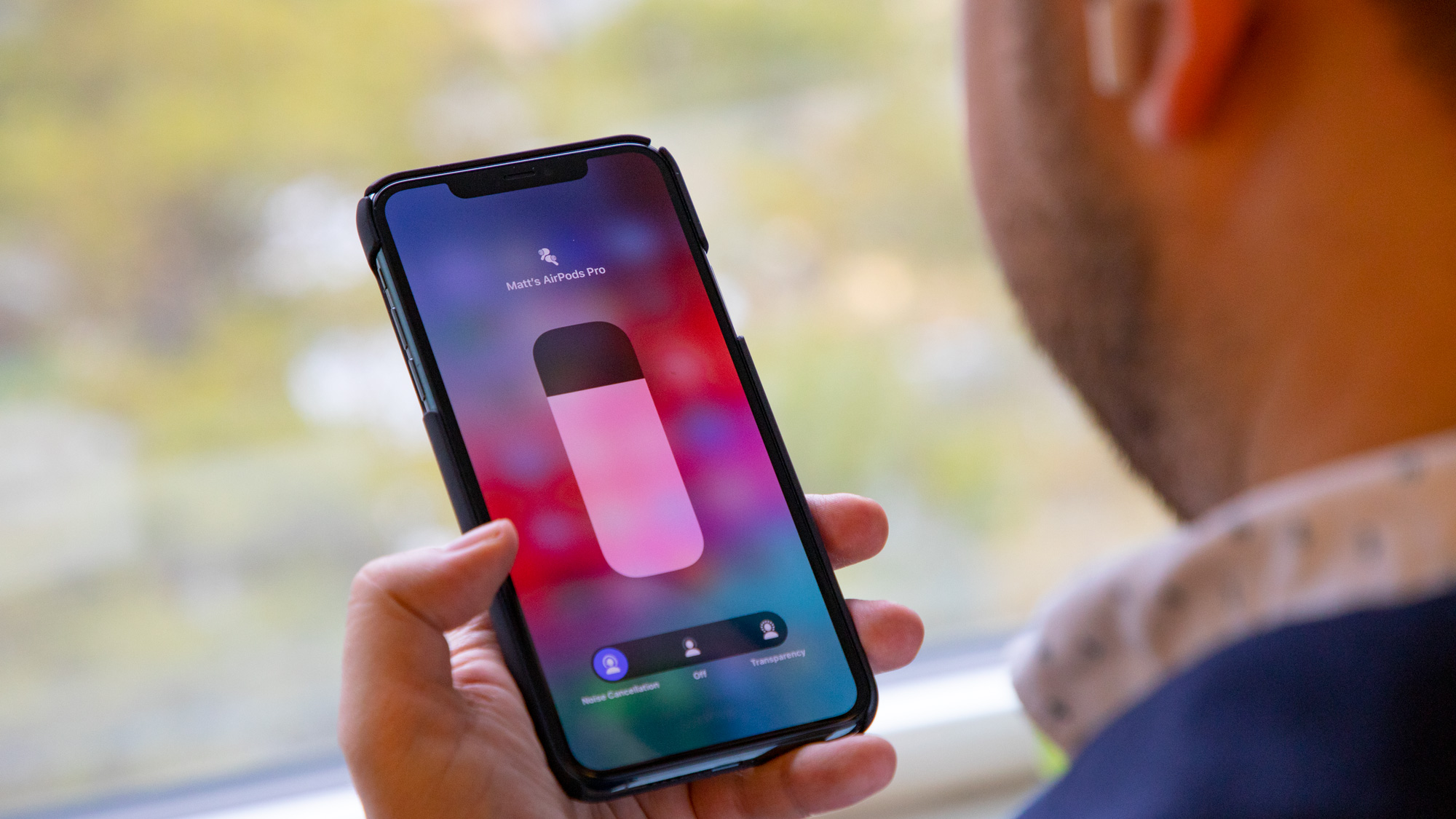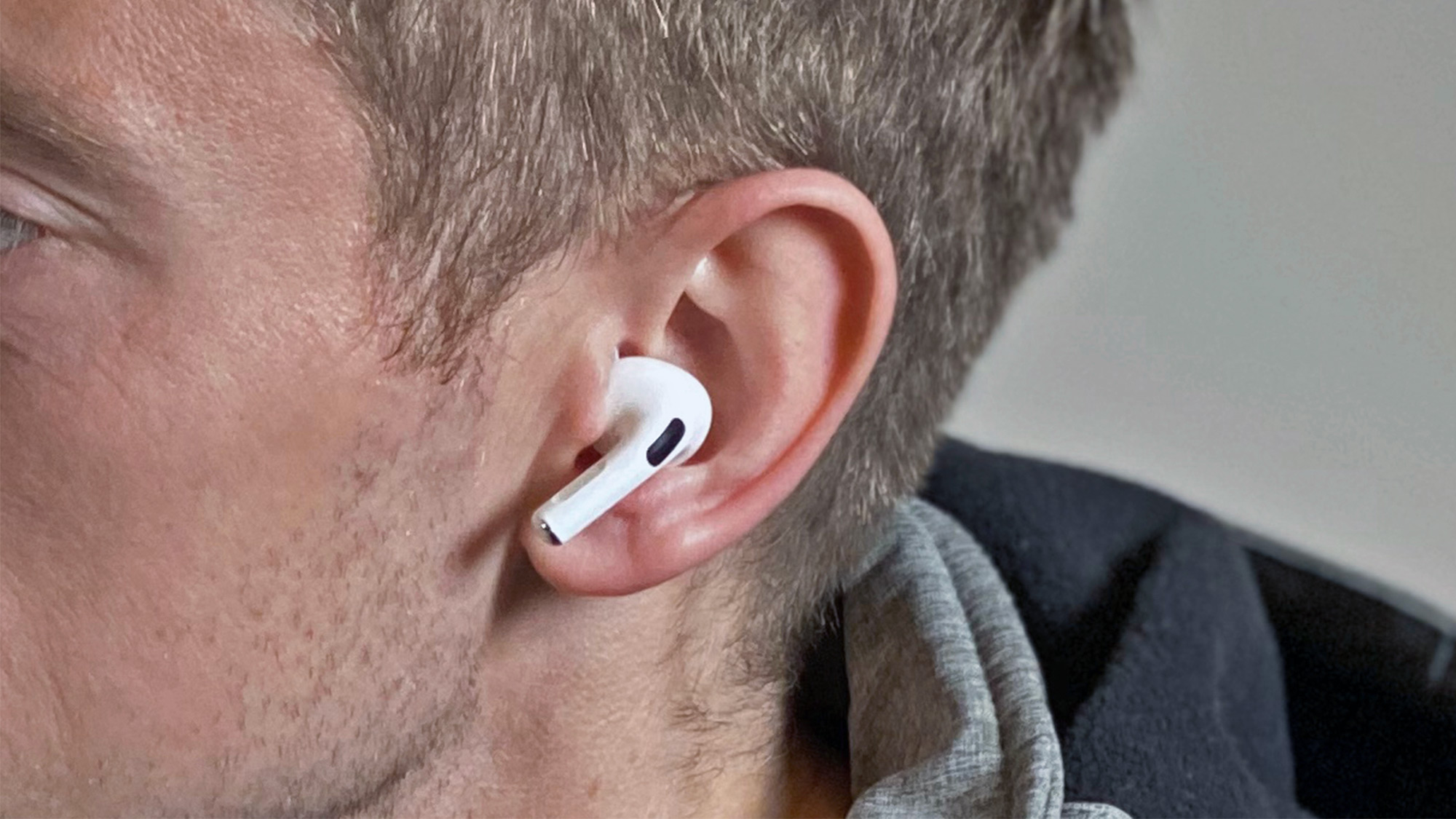Do you need to choose between the Apple AirPods and the AirPods Pro? We understand why you’re drawn to Apple headphones, but there are some things you need to know. The true wireless earbuds may look similar, but there are lots of differences between these two choices.
The original Apple AirPods might be the most recognizable wireless earbuds in the world. Back in 2019, three years after their initial launch in 2016, they were lightly upgraded.
However, the AirPods Pro are different. They represent a culmination of years’ worth of work on true wireless tech, which means they’re a higher-end version of the Apple earbuds.
Not only are the AirPods Pro exceptionally easy to get up-and-running, they’re also far more comfortable and come with a range of new features, including adaptive EQ and, their headline feature, noise cancellation. That's why they made our round-up of the best true wireless earbuds of 2020.
It might seem like we’re suggesting the AirPods Pro are always the better choice. But there’s more to consider. They’re way more expensive than the standard AirPods, and that’s led a lot of people to wonder if it’s worth upgrading to the AirPods Pro, or if they should simply stick to the cheaper AirPods that were updated in 2019.
We also think it’s worth considering that we might get new versions of both true wireless earbud models in the near future. We've heard rumors of the AirPods 3 and the AirPods Pro Lite, both of which are said to be launching in 2020.
The choice will be different for everyone. But, to help you understand which AirPods model is right for you, we’ve broken down the key differences below.
- Read our full Apple AirPods and AirPods Pro reviews
Apple AirPods and AirPods Pro news
Before we get into the differences between the AirPods and the AirPods Pro, it's worth mentioning that both earbud models are getting an upgrade very soon.
The firmware upgrade is coming with iOS 14 – the beta is out now, but you'll have to wait until September until the full version is expected to be released with the iPhone 12.
Both the AirPods and the AirPods Pro are getting a new auto-switching feature means that the AirPods can now "magically switch over between devices", detecting automatically which device you are using.
For example, if you've just finished listening to a podcast on your phone, you can pick up your iPad to watch a TV shows and the AirPods will connect to the tablet automatically. It's a nifty feature, and yet another way AirPods are tailor-made for the Apple ecosystem.
The noise-cancelling AirPods Pro are also getting an upgrade with iOS 14, which will allow for Dolby Atmos spatial audio.
The new feature will work in 5.1, 7.1, and Dolby Atmos, which positions sound all around you within a virtual sphere – that means that if you're watching a Dolby Atmos film that shows a plane flying overheard, it will sound as though the plane is really passing above you.
As well as allowing for clever virtual Dolby Atmos, the AirPods Pro will also be able to tracks the motion of your head and your device, to ensure that the audio always appear to originate from the correct position.


Difference #1: The AirPods Pro have noise-cancelation
Probably the most noticeable difference is that the AirPods Pro actually use active noise cancellation rather than relying only on passive noise reduction from the eartips.
The level of noise cancellation on the Pro can be customized, and can even be set to Transparency Mode to allow you to hear what’s happening around you without taking off the headphones. There’s basically no drawbacks to having it.
The regular AirPods, unfortunately, don’t offer any level of active noise cancelation, and only offer a noise reduction effect by their tight seal.
- The best noise-cancelling headphones of 2020
Difference #2: The AirPods Pro are water-resistant
If you’re planning on taking your Apple earbuds to the gym, you should probably pick up the more expensive AirPods Pro as they’re water-resistant IPX4 – i.e. sweat- and water-resistant – compared to the non-water-resistant AirPods.
Now, that doesn’t mean you should take your new high-end AirPods Pro in the pool with you – if they fall out or stay submerged too long they'll get ruined. If you’re looking for something you can take into the pool with you, you'll need a pair of waterproof earbuds.

Difference #3: The AirPods Pro have custom eartips
In terms of finding the right fit, the AirPods Pro will offer more customization than the one-size-fits-all Apple AirPods: inside the box you’ll find a number of eartips and if you’re not sure which to use, Apple will even help you find the correct fit with a quick audio test and can tailor the sound to suit your ear structure.
Because the eartips on the AirPods are plastic, you're stuck with them – although some people do find them more comfortable than silicone eartips, which have to be pushed into your ear.
Difference #4: AirPods Pro have a pressure valve inside
If you’ve ever felt uncomfortable when wearing a pair of in-ear headphones, it’s because there’s a small, annoying-but-not-life-threatening pressure build-up inside your ear. To combat that, the AirPods Pro uses a very small pressure valve to reduce the pressure inside your ear – a feature Apple borrowed from the Powerbeats Pro.
It’s a small perk of the Pro series of headphones, but one worth considering, especially if you’re sensitive to pressure build-up.

Difference #5: The AirPods Pro have Adaptive EQ
Also inside the earbuds themselves are internal microphones that can measure volume. These are absolutely crucial for effective noise cancellation but, as an added bonus, can also be used for features like Adaptive EQ that optimizes sound quality for your physiology.
How does it work? According to Apple, the AirPods Pro “automatically tunes the low- and mid-frequencies” by using a custom high dynamic range amplifier that “produces pure, incredibly clear sound while also extending battery life.” Nifty!
Difference #6: ...and offer wider soundstage and a slight uptick in clarity
While you won’t find a massive difference in audio performance between the two AirPods, many folks have noticed a slightly wider soundstage (how clearly you can hear individual instruments) and a slight uptick in overall clarity when using the AirPods Pro. That’s likely because the AirPods Pro have a slightly larger frequency range and a slightly larger chamber that allows for the sound to expand more.

Difference #7: The AirPods Pro are shorter and stouter than the AirPods
OK, so this is really more of an aesthetic difference than a functional one, but the AirPods Pro are a bit shorter and stouter than the regular AirPods. The iconic tips of the headphones don’t reach as far down your ear with the Pro, but they will cover up more of your ear due to their larger housing.
Both have a somewhat futuristic look to them, however, which some find unappealing – and some love. Either way, both models are unmistakably 'Apple'.
Difference #8: The AirPods Pro are way, way more expensive
Finally, a category where the regular AirPods stand a chance: At $249 / £249 / AU$399, the AirPods Pro are significantly more expensive than the regular AirPods ($159 / £159 / AU$249) that come with a standard case.
If you want to swap out the regular case for the wireless charging case, the price of the regular AirPods jumps to $199 / £199 / AU$319, putting it within arm's reach of the AirPods Pro.
These prices regularly dip, however – particularly for the regular AirPods. You can check out the best AirPods and AirPods Pro deals we've found in your region below:
- Heading to college? Here's how to get free AirPods with your next Mac or iPad
Are there any similarities?
We’ve focused on the differences so far, but really the two true wireless earbuds have tons in common, too.
For one, they’re both true wireless earbuds with similarly sized cases and a battery life of around 3.5 hours per charge, and over 24 hours with the battery case. T
hey also have a fairly similar sound quality with only minor differences in the soundstage / clarity. They both use the new Apple H1 Wireless chip that enables hands-free “Hey Siri” functionality, and work seamlessly with iOS.
Which ones should you buy?
If you’re bothered by outside noises while at work or while you’re commuting, need water-resistance for the gym or are sensitive to pressure build-up in your ears, it’s probably worth paying a bit more for the Apple AirPods Pro.
But if your chief concerns are sound quality or battery life, you can save yourself a ton of money by sticking with the basic AirPods.
Of course, we suggest you read both our Apple AirPods Pro review and our Apple AirPods (2019) review to learn even more about them, but hopefully you know a bit more now than you did five minutes ago.
from TechRadar - All the latest technology news https://ift.tt/2WG2ZRn
via IFTTT
0 التعليقات: